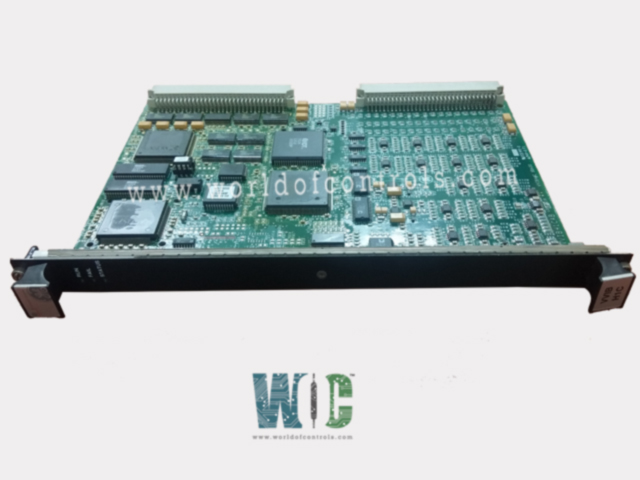
World Of Controls understands the criticality of your requirement and works towards reducing the lead time as much as possible.
IS200VVIBH1C - Vibration Monitor Board is available in stock which ships the same day.
IS200VVIBH1C - Vibration Monitor Board comes in UNUSED as well as REBUILT condition.
To avail our best deals for IS200VVIBH1C - Vibration Monitor Board, contact us and we will get back to you within 24 hours.
Part No.: IS200VVIBH1C
Manufacturer: General Electric
Product Type: Vibration Monitor Board
Country of Manufacture: United States (USA)
Series: Mark VI
IS200VVIBH1C is a Vibration Monitor Board developed by General Electrics under Mark VI. Vibration probe signals from the TVIB or DVIB terminal board are processed by the Vibration Monitor board. Up to 14 probes can be connected to the terminal board directly. To the VVIB processor board, two TVIB can be connected. VVIB digitizes the various vibration signals and transmits them to the controller over the VME bus. For shaft vibration monitoring, the Mark VI system employs Bently Nevada probes. The vibration probes listed below are compatible:
To install the V-type board, follow these instructions.
The Vibration Monitoring on the VVIB is divided into three sections:
Position data from Proximitors, wideband vibration data from Proximitors, accelerometers with integrated outputs, Velomitors, and Seismics can all be used on channels 1 through 3. When a Keyphasor probe is utilized, 1X and 2X information can be extracted from Proximitors viewing axial vibration information. In LM applications using accelerometers, tracking filters are commonly employed.
Position information from Proximitors, wideband vibration information from Proximitors, Velomitors, and Seismics can all be found on Channels 4–8. When a Keyphasor probe is utilized, 1X and 2X information can be extracted from Proximitors viewing axial vibration information.
Only position information is broadcast on Channels 9–12.
Position feedback and Keyphasor feedback are supported by Channel 13.
Diagnostics execute a high/low (hardware) input signal limit check as well as a high/low system (software) limit check. In the field, the software limit check can be changed. If one of the X or Y probe pairs exceeds its limitations, a probe fault, alert, or trip condition occurs. Furthermore, if a probe error is discovered based on the dc component, the application software avoids a vibration trip (the ac component).
Number of Channels
26 probes with two TVIB boards
Probe power
Buffered outputs
The amplitude accuracy for the signal to the Bently Nevada 3500 vibration analysis system is 0.1 percent.
WOC experts are always available to help you with your Mark VIe requirements. For more information, please contact WOC.
What is IS200VVIBH1C?
IS200VVIBH1C is a Vibration Monitor Board developed by General Electrics under Mark VI.
What is the function of the component?
Vibration Monitor board processes Vibration probe signals from the TVIB or DVIB terminal boards.
What is the Phone Number for WOC?
Please contact World of Controls FZE for sales at +1 609 385 1231